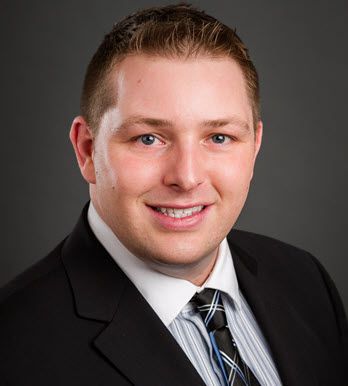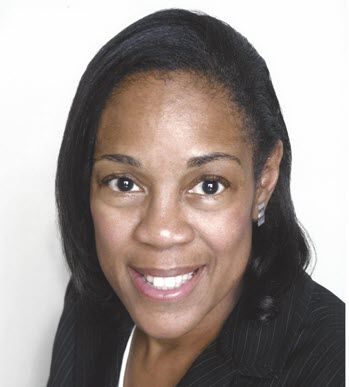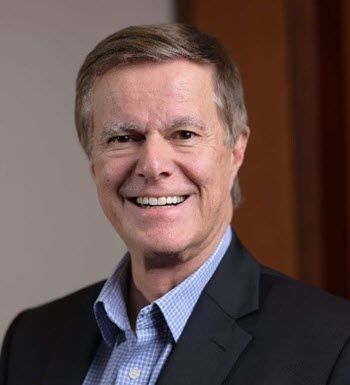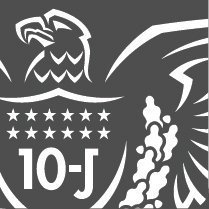Three new members joined the Community Development Advisory Council (CDAC) in January, bringing with them a deep appreciation for the assets and capabilities of their communities.
Council members advise the Bank on current developments and emerging issues in community and economic development. The three new members join eight returning members of the CDAC. Each member serves a three-year term. The group meets formally twice a year and members provide insights year-round.
We talked with each new member to learn who they represent, the trends they see coming, and why they applied to serve on the CDAC.
Joel Smith

President of Community Development and Chief Credit Officer
Native American Bank
Denver, Colorado
Community Connections: Tell us about a community that you'll be representing on the CDAC.
Joel Smith: First and foremost, my work every day is in support of Indian Country at large. We provide financing for economic development and affordable housing on reservation communities and off reservation, working with the tribal governments themselves and, to a lesser extent, also with individual tribal members by providing capital and banking services here at Native American Bank. That is my principle expertise.
Also, my tribe is the Caddo Nation in Oklahoma. I serve on the board of the Economic Development Authority for the Caddo Nation and am involved in a lot of the tribal programs there. I am generally up to speed with what my tribe and other tribes are doing in Oklahoma.
There are a lot of things that distinguish the circumstances and needs of tribal communities from even other marginalized communities and others that haven't had access to capital. I served with a working group looking at underwriting for racial justice. At every turn, we saw that things are different for Indian Country, including structural barriers and challenges with the reservation status, the land status, the sovereign immunity, and the tribal courts that make it harder to successfully provide capital in those communities. I would be bringing knowledge about how things look different for successfully providing capital in addition to other cultural components such as the Native population’s approach to money, their experience in and trust for institutions.
Community Connections: When you think about the community you serve, what do outsiders often get wrong about it?
Joel Smith: The Native community is often referred to as the invisible minority or the forgotten minority. It is a marginalized group that doesn't show up on a lot of statistical studies. Even people who are very well-meaning, that are talking about uplifting communities, have larger groups that are concentrated on first. So first it's just bringing visibility to the Native community and that they're still here, they're not vestiges of the past.
The other things that we tend to run into are assumptions like Indians don't pay taxes or Indians all get a lot of gaming revenues or Indians get free college or there are already too many government subsidies going to help these communities that that they don't need other assistance. In reality, not every tribe has a successful gaming operation and Indians pay taxes just like everyone else. And even with the government support for reservations, the reason there's a need for support is because there is not funding coming into the community from the county or the state. The deck is still often stacked against that community for creating successful small businesses or producing wealth for its residents.
Community Connections: When you think about Native communities five or ten years from now, what trends do you think might have an impact?
Joel Smith: What I see starting to happen is more economic development projects undertaken by individual tribal community members, more private enterprise. Typically, the biggest developer in any reservation is the tribal government itself. Often, they own convenience stores, hotels, restaurants and grocery stores, so tribal members don't have to drive 30 miles to go get fresh food. They're operating some of these as a community service. And we want to develop that private enterprise, including in a way that imports dollars onto the reservation. There are many studies about what you can retain and circulate within your community so that everyone's not just driving off reservation and leaving their dollars in the border town. Tribes want to be able to keep it local, to have places for local jobs and then continuing that cycle of funds within the community. I want to see more and more of that development from individual tribal members that are doing good in their community besides just the tribe itself.
Community Connections: You have plenty of other things you can be doing with your time. What was it about this opportunity that had you interested in serving?
Joel Smith: The biggest thing was just making sure there was representation at the table for the Native community. That perspective is often left out. The previous CDAC cohort had good Native representation, and their terms expired. What really excited me from talking to them about their experience was getting to learn more about how policy may be made and the inner workings of the Federal Reserve.
Jennifer Tidwell

Principal Place Strategist
Health Forward Foundation
Kansas City, Missouri
Community Connections: You are principal place strategist for the Health Forward Foundation. What is place work?
Jennifer Tidwell: “Place-based” means services that are tied to where people live. In this instance, place work has to do with housing and home ownership, as well as digital equity and digital access. It means, how do we create wealth and health with housing and homeownership and how do we get digital equity and digital access into homes within our communities?
Community Connections: What territory do you cover for the Health Forward Foundation?
Jennifer Tidwell: We cover three counties in Missouri: Jackson, Cass and Lafayette. We also include parts of Platte and Clay counties within the boundaries of Kansas City, Missouri. We cover three counties in Kansas: Wyandotte, Johnson and Allen.
Community Connections: Give us a sense of the communities you're representing.
Jennifer Tidwell: In our communities of focus, we work in urban and rural counties with diverse needs; and we are helping them with resources to successfully impact their communities, as it relates to wealth and health. We are providing critical information to impact the increase of housing to rural areas, and we are really trying to figure out how we bring economic development and housing to those areas as well.
We also work in suburban and urban counties assisting them with capacity building for partners creating and maintaining housing production and needed homeownership activities.
Community Connections: When you think about the communities you work with, what do outsiders often get wrong?
Jennifer Tidwell: People do not see the resilience and the commitment of the many community households making a difference one step at a time. The community folks and service providers are down on the ground working to create a better community. Folks sometimes think they're not doing anything but really this activity is happening incrementally.
Community Connections: Five or ten years from now, what do you think might be different? What trends do you see having an impact there?
Jennifer Tidwell: We're seeing many of the communities that we work with becoming more vibrant. People are beginning to look at the work these service providers and community members and housing providers are doing. They're taking one house at a time or one business at a time, bringing them back. I think people will begin to see that progress, and they'll want to come back and live in those areas. We're seeing some of that even now.
Take Northeast Kansas City, Mo., for example. The people in the neighborhood started maybe six or seven years ago, deciding they're just going to clean up all the vacant lots, they're going to go house to house and see what people need in terms of home repair, and they are cleaning up old parks. The Northeast folks are renovating houses and multiplexes at an affordable rate. They are renovating for the people that already live there, which is really a cool thing. They’re working with the Land Trust and the Land Bank to bring houses back to life.
Community Connections: Why did you decide to serve on the CDAC?
Jennifer Tidwell: I have worked with the Federal Reserve Bank over my career on a number of different projects, and housing was one of them. I’ve worked with the Federal Reserve and have partnered with banks, getting banks to think about the Community Reinvestment Act and how they can connect with households. I've worked with them over the years both in the Kansas City and St. Louis area. I really was honored to be selected.
Rollin M. Wood

Chief Executive Officer
Native Partnership for Housing
Gallup, New Mexico
Community Connections: Tell us about a community that you'll be representing on the CDAC and give us a sense of who they are.
Rollin Wood: Native Partnership for Housing is a Native American community development financial institution, a 501c3 nonprofit. Our service area includes Arizona, New Mexico and Utah. We have, however, served Natives regardless of where they reside throughout the country. There are 51 federally recognized tribes in our service area, representing close to 530,000 Native Americans. Of the tribes, 23 are in New Mexico, 22 are in Arizona and eight in Utah.
Unfortunately, most reservations, especially the rural reservations, have an extreme lack of middle-class jobs, middle-class housing, and effective banking. One place we see the impact is appraisals. It’s a huge issue.
I worked with our board to form holding and construction company subsidiaries. We did this because of the shoddy construction that we were receiving from other contractors. We've created a training program to develop construction talent in the Native communities. With this significant array of skills and experiences, we know what it costs to build a home. The appraisals that we're getting on the reservation are less than the cost of construction. That's a problem. If you can't get the appraisal, the bank's not going to fund it.
So we send our children to school and we bring them back. We would like them to be part of the community but have to tell them, you can't live here because you make too much money to live in a Housing Authority home. And you can't buy a home of your own because no one can afford to build it and sell it to you without going bankrupt. We need to overcome those challenges. It's the most challenging task I've had in my career, but it's also the most worthwhile job that I've ever had. It's a fight that must be taken on.
Community Connections: What do outsiders often get wrong about your community?
Rollin Wood: A lot of outsiders think that if you're Native, you live on a reservation but arguably 70% of all Natives do not. We're scattered throughout the country. As a citizen of the Cherokee Nation in Oklahoma, here I am in New Mexico. Most tribes have some representation within Arizona, New Mexico and Utah, because we go where there's work.
Outsiders also think the reservation is your ancestral land, which is often not the case. They may also think that we get free homes and free college education, which is not the case.
Some may think that we have limited ability, limited skills. So if you're talking to somebody, and you want to create a joint venture team between construction companies, they may think they need to come in and teach members of our communities how to drive a nail. They don't realize that they've already developed these skills. We need to foster an environment that is productive. And, in a very positive way, to educate and build on all the positive strengths that our nation has, Native and non-Native alike.
Community Connections: When you think about the community that you serve, what might be different five or ten years from now, or trends that you see moving in our direction?
Rollin Wood: Without the creation of middle-class jobs and middle-class housing we're going to see a continued decline in many reservation communities. In the southwest, our service area, probably 30% of the total population of their communities are living on the reservation. Within three or four generations, when the Elders pass on, they will be greatly diminished. Not long after that, reservations will probably be not much more than a name on a road map. We need to reverse that trend. We need to create opportunities in the communities to draw talented people back, to create living wages, to create opportunities for growth, to raise their families.
Community Connections: What about the CDAC made you think this was something that you would want to do?
Rollin Wood: I've committed my life to this work and to our communities. I don’t have all the answers, but I think it's my responsibility, through the knowledge that I've gained between my for-profit and nonprofit experience, growing up in a Native family, working in Native communities, to do my best to provide my voice, my observations, my perspective of what's transpired and of the possibilities that we can build a brighter future going forward.
